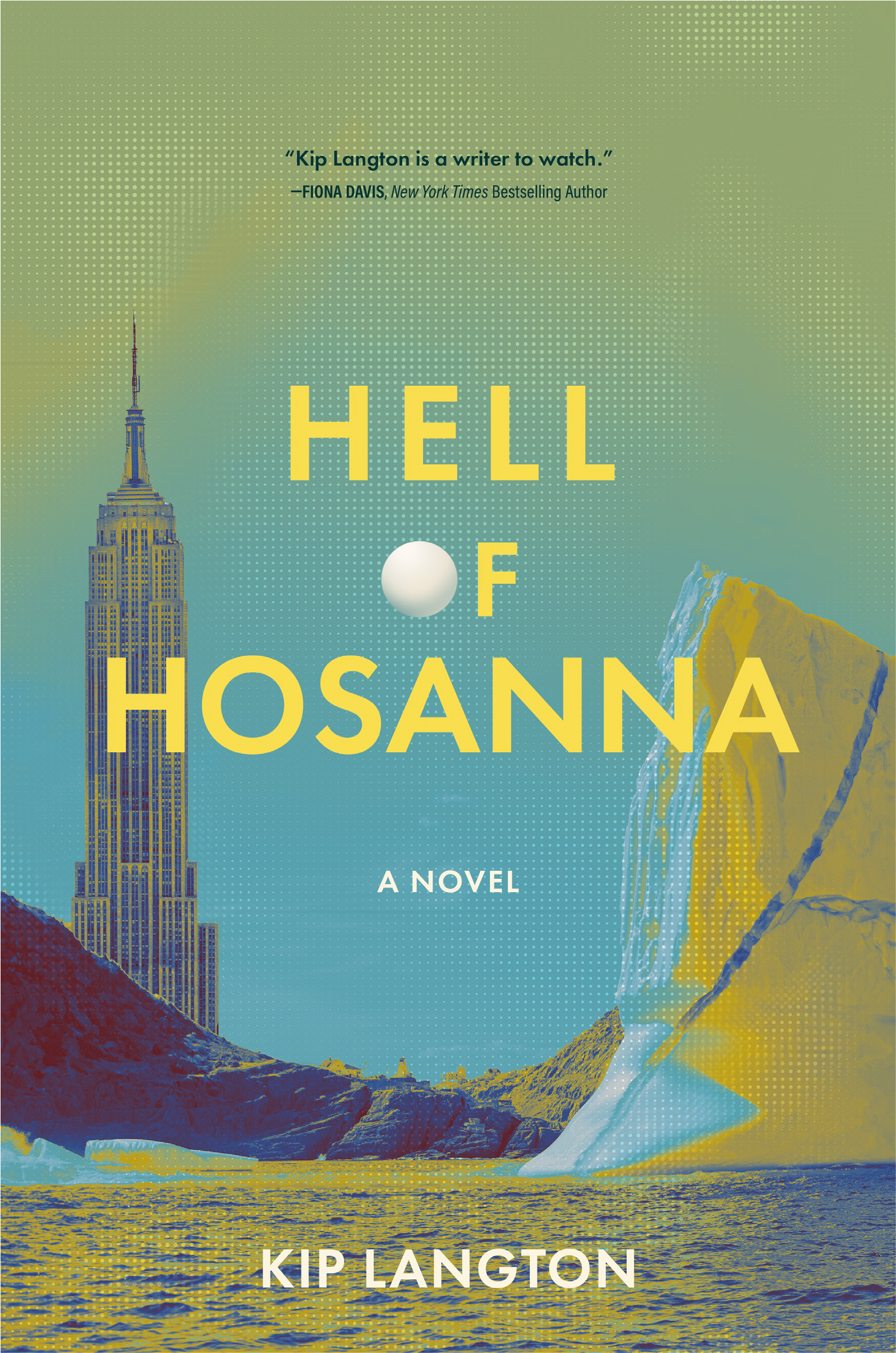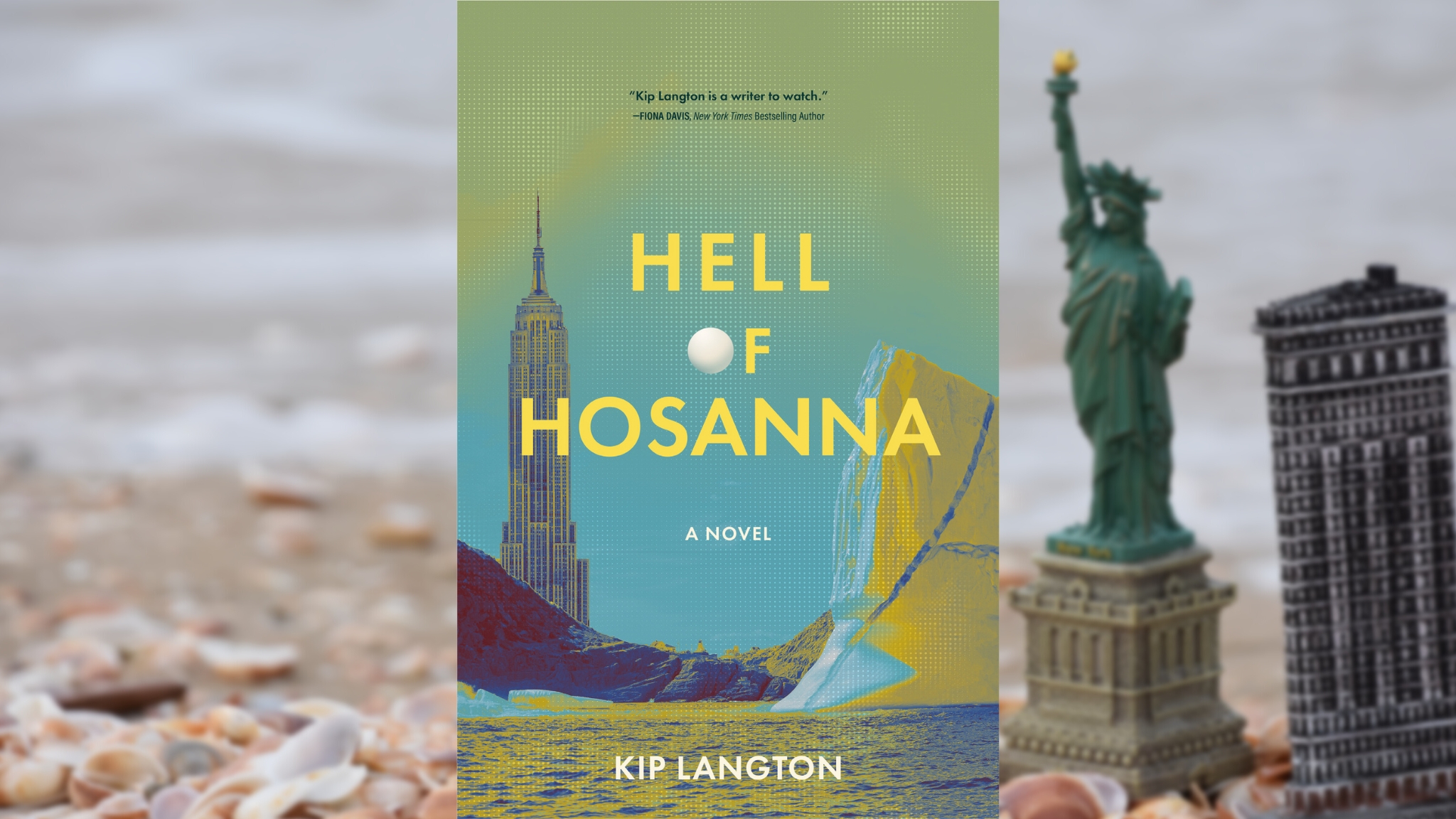Hell of Hosanna by Kip Langton
What's It About?
A futuristic phenomenon comparable to the iconic works of Brave New World, 1984 and Citizen Kane, and reminiscent of the final scene of Planet of the Apes when Charlton Heston stumbles on the ruins of the Statue of Liberty.Have you ever been in such awe of a book that you couldn’t find the right word to describe it? (Not a good place to be if you write reviews for a living!)
Maybe the word doesn’t exist yet. Remember the classic Woody Allen movie Annie Hall when Alvy tells Annie that “love” is too weak a word to describe his feelings for her? “I lurv you….I loave you…I luff you,” he offers as alternatives for a superlative that has and needs no alternatives.
I luffed Kip Langton’s debut dystopian novel Hell of Hosanna (Koehler Books) for so many reasons: the frightening but well-conceived vision, the marvelous writing, the creativity it took to develop the overall concept in the first place, and the ability to play off that theme and imagine an entire world and society structured around it.
Hey, but it’s not just me groping for words for the futuristic phenom. Several others took the easy way out, comparing Hell of Hosanna to iconic works Brave New World, 1984 and Citizen Kane. You might add to that list the final scene of Planet of the Apes when Charlton Heston stumbles on the ruins of the Statue of Liberty.
Unique Dystopian Setting
Central to the world presented by Langton is Fogo Island, a grand and elusive pleasure palace created by Fep Anglish, father of the book’s narrator, James. Fep has “disassembled” all the Manhattan landmarks and “reassembled” them on his private island – the Empire State Building, Metropolitan Museum of Art, Statue of Liberty, The Dakota apartment building, the Seagram Building, you get the idea. “A zombie graveyard of spatial financial assets,” he says.
Add to that Fep’s creation of a mega company known as U – basically the compression of 60,000 companies worldwide all into one entity.
In one scene, characters are in the Bar Room of what was New York’s fashionable 21 Club. A variety of toys and memorabilia from a “past world” hang from the ceiling: a Toys “R” Us truck, a Goodyear blimp, a tennis racket, baseball bat, golf club, replica of Air Force One, trinkets from Apple, JP Morgan Chase, Exxon, Microsoft, Amazon, Walmart, Sony, Disney and PepsiCo.
“The American Dream was now just a toy hanging from a ceiling,” Langton writes. “It was the boneyard of capitalism.”
To hear James describe it, “This was the flagship of trillionaire minimalism at its purest. So distilled in wealth it went beyond the decorative into some time of gilded blandness … It was enough to make you scream out of boredom and self-hatred.”
Anti-Capitalistic yet Nostalgic Future
All the artifacts represent a hyper-capitalistic time that Fep has so thoroughly squashed.
In effect, society as Fep orchestrated it allows for no future, for nothing to happen because it already has. Sophisticated holograms (Hypothetical Algorithmic Consciousness) reproduce people and events from the past. They represent famous personalities of great character, creativity, accomplishment and thought. But there is no channel for further industry or advancement.
It was “a past powdered up with nostalgia so you couldn’t see the decomposition … The established past was the future. There was no room for aspirations. The industry was not taking new members.”
And then Fep self-destructs – intending for James to go with him. But James survives. He and a cast of well-defined, decidedly deep and, at the same time, superficial characters are left to navigate this bizarre terrain.
Food for Thought
Each page takes readers around another corner in this terrifying futuristic world and ushers James into a further hell of confusion and boredom from which he tries desperately to escape. What chance does he have to make something of his life and find a sense of peace? Does Langton offer us hope in the end?
Langton’s descriptions of the past and interpretations of the future provide readers with much intellectual calisthenics and food for thought. Sometimes I found myself reading passages twice, either for pure pleasure of the written word or to make sure I was successfully following along with this complex writer. Could a future envisioned by the author come to pass? Is it so well-conceived that readers need to even entertain that possibility?
Consider this joke that Fep liked to tell:
Democracy walks into a hospital room, sees America in bed watching SpongeBob SquarePants, and asks, “Dear friend, why are you doing this to yourself?”
“Because, Democracy,” America answers. “I am Atticus Finch. And I feel like Holden Caulfield.”
“My dear friend,” Democracy pities, “you must judge history as it was, not as it is. Your life depends upon that.”
“Then I must die,” America answers.
“Then I must go,” Democracy responds.
Kip Langton is a writer to be admired and taken very seriously – for his art of creative writing and his capacity for creative thinking. I hope you love his work as much as I do.
 About Kip Langton:
About Kip Langton:
Kip Langton is widely recognized for his creative achievements, having won or been shortlisted for over forty creative awards, which include the Cannes Lion for Innovation, New York Festivals, Innovation by Design-Fast Company, London International Awards, W3 Award, Clio Award, Shorty Social Good Award, Epica Award, and Communication Arts Award of Excellence. He is a versatile writer who works across genres and has held a variety of creative positions for some of the most famous agencies in the world. Kip is a graduate of Davidson College and lives in New York City.





